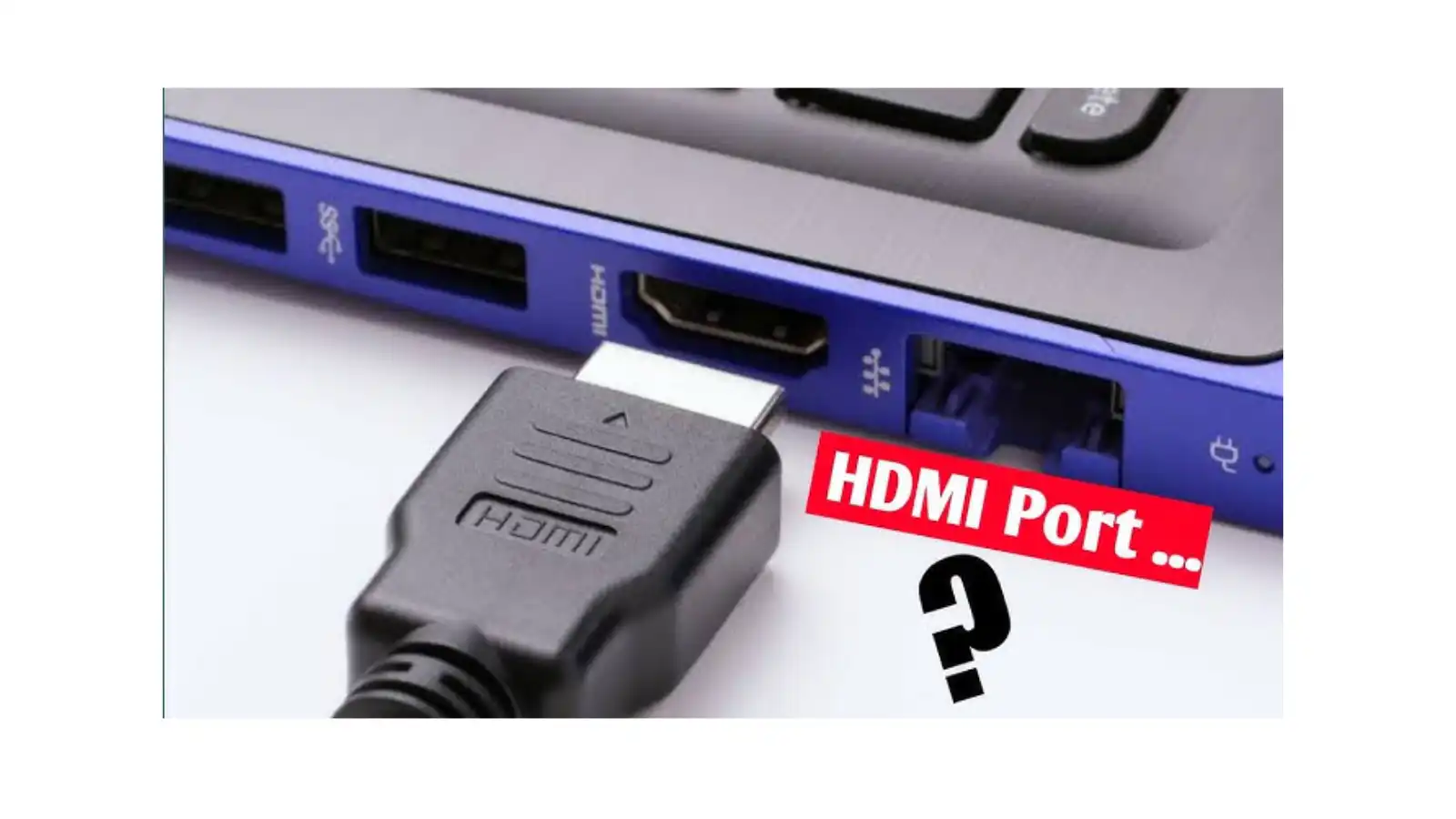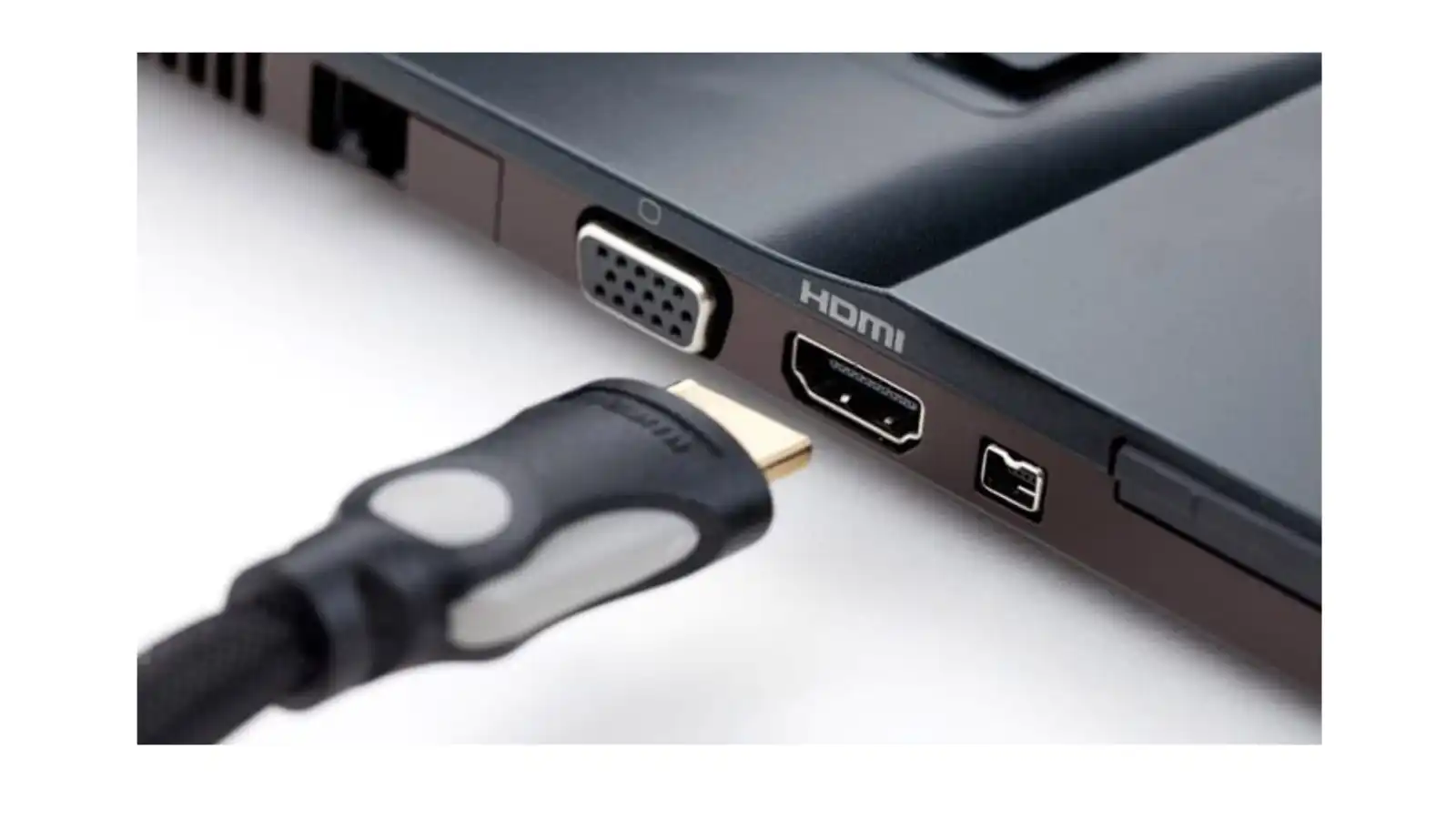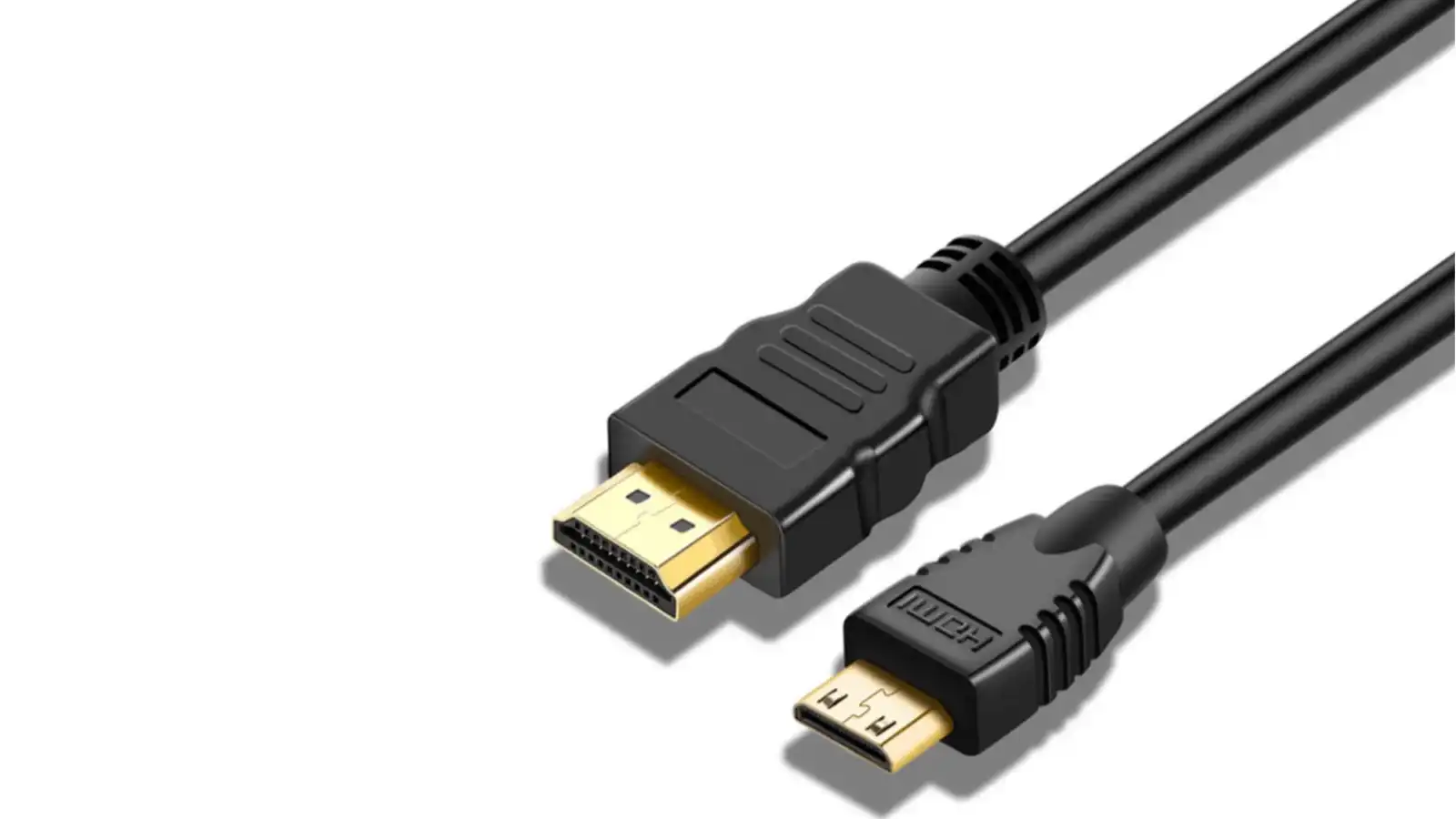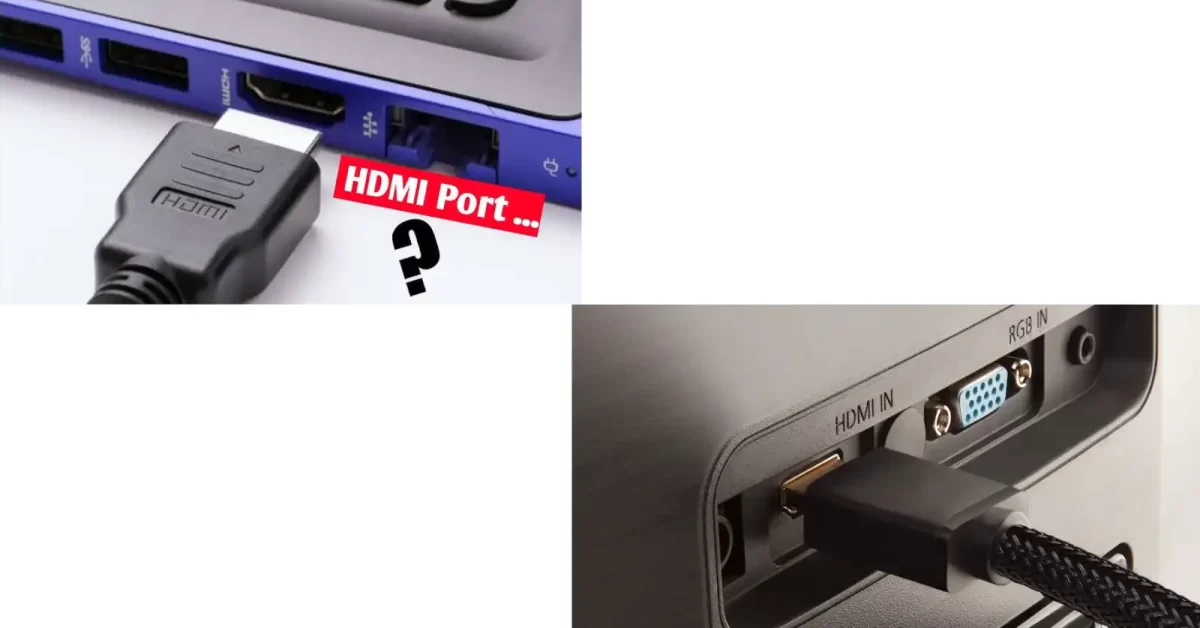What is HDMI? A Simple Definition
HDMI stands for High-Definition Multimedia Interface. HDMI functions as a special audio/video connection protocol that enables uncompressed visual and audio signals to move from source devices to compatible display devices.
The HDMI system functions as the essential cable and connector that gives you ports for linking your devices to displays for viewing high-quality picture quality along with sharp audio output.
The technology of HDMI provides users with a modern multimedia experience. The current era eliminates the need to work with various cables to handle video and audio functions.
The HDMI cable enables convenient and efficient multipurpose data transmission because it delivers clear, high-definition video together with multiple-channel audio.
A Brief History of HDMI

The leading electronics companies Sony, Philips, Toshiba, and Panasonic founded HDMI in December 2002. Digital device manufacturers wanted to establish a new universal connection standard, which would take the place of outdated analog interfaces such as VGA and component video.
HDMI developers released multiple technology-wide updates since its original launch in 2002. HDMI versions that succeed one another introduce better bandwidth capabilities and resolution capacity in addition to enhanced features, because of which high-definition devices choose this connection standard.
How Does HDMI Work?
The basic operation of HDMI relies on a digital framework to send information through the transmission of binary codes (base two numbers). The digital signal transmission method provides clean signal paths that minimize interference so it displays both image and audio signals with better quality than analog connections do.
The following details explain HDMI functionality:
- A device functions as the source point for audio/video data transmission (a gaming console operates as a prime example alongside Blu-ray players and laptops).
- The digital signal travels between source devices and display devices through the HDMI cable connection.
- The display terminal which displays the received signal functions as the display device (this includes TVs, monitors and projectors).
The technology behind HDMI cables enables them to deliver data at high speed due to their capability to handle heavy bandwidths. High-resolution content together with advanced audio forms like Dolby Atmos needs specific attention when using HDMI cables especially 4K and 8K video.
Features of HDMI
HDMI has some functionality beyond establishing device connections, such as enhancing the quality of sound and images. The following are some of the most significant attributes of HDMI:
1. High Resolution Support
HDMI also encompasses a multi-resolution Trellis effect ranging from 480p to 8k resolution in a supportive format. It is suitable for use on old DVDs, 4K Blu-rays, and streaming as well.
2. Audio and Video in One Cable
One of HDMI’s biggest advantages is its ability to transmit both audio and video through a single cable. This eliminates the need for separate audio cords, making your setup simpler and less cluttered.
3. Advanced Audio Formats
HDMI can pass through high-definition sound formats like Dolby TrueHD and DTS-HD Master Audio, which are considered to be lossless, and also can broadcast 3D sound formats like Dolby Atmos. This is why it is suitable to use it for your video and music files, as well as video games.
4. CEC (Consumer Electronics Control)
CEC enables you to switch on/off multiple HDMI-connected devices using a single remote. For instance, you can use your TV remote control to operate your Blu-ray player as well as the soundbar.
5. Ethernet Channel
Sometimes, certain HDMI cables consist of an Ethernet channel, which means you may be able to share the internet connection among attached devices without using a separate Ethernet cable.
6. ARC (Audio Return Channel)
HDMI ARC enables your TV to send audio signals back to a soundbar or AV receiver.
Types of HDMI Cables

HDMI cables differ in their quality levels. Find the appropriate HDMI cable according to your requirements to guarantee superior performance. The different HDMI cable types include a standard version and high-speed and premium high-speed variants.
1. Standard HDMI Cable
- Best for: 1080p resolution and basic home setups.
- Bandwidth: Up to 5 Gbps.
- Ideal for: older devices, DVD players, and standard HD TVs.
2. High-Speed HDMI Cable
- Best for: 1080p, 4K, and 3D content.
- Bandwidth: Up to 10.2 Gbps.
- Ideal for: Gaming consoles, Blu-ray players, and modern HDTVs.
3. Premium High-Speed HDMI Cable
- Best for: 4K and HDR content.
- Bandwidth: Up to 18 Gbps.
The premium high-speed HDMI cable serves best when used with high-end home theaters and 4K streaming devices.
4. Ultra-High-Speed HDMI Cable
The recommended use of these cables includes both 120Hz 4K resolution and ultra-high-end gaming performance.
- Bandwidth: Up to 48 Gbps.
The Ultra-High-Speed HDMI Cable provides the best solution when you need to protect your system investment and stay ahead of modern technical standards.
HDMI Versions: What is the Difference Around?
HDMI has evolved with every version over the years, and with each new version, HDMI introduces something new in performance or feature. Here is a description of the important HDMI versions:
1. HDMI 1.0 to 1.2
- Very simple support for 1080p video and 8-channel audio.
- This setup was for future upgrades in HDMI.
2. HDMI 1.3 to 1.4
- It brought resolutions up to 4K at 30Hz in higher-grade support levels.
- It also introduced ARC and Ethernet Channel.
3. HDMI 2.0
- The increased bandwidth was up to 18 Gbps.
- It supports 4K at 60 Hz with HDR (High Dynamic Range).
4. HDMI 2.1
- It has the latest advanced version.
- Supports 8K at 60Hz, 4K at 120Hz, and dynamic HDR.
- You can use it for gaming.
Why HDMI is the Standard
There are many reasons that contribute to HDMI becoming the standard multimedia connectivity:
1. Quality
HDMI does high-definition, uncompressed audio and video.
2. Convenience
HDMI can collect both audio and video with only one wire, thus reducing wires from the setup.
3. Compatibility
It practically works anywhere used with televisions, monitors, gaming consoles, and computers.
4. Future-Proof Technology
Every new version of HDMI moves forward in technological advancement creation, thus keeping it relevant through the ages.
Most Common Applications of HDMI
HDMI makes its name in many places—from homes to institutions. Here are examples:
1. Home Theatre Systems
Home theaters cannot function optimally unless they have Blu-ray players, soundbars, and even streaming media sources linked to the television through HDMI.
2. Gaming Consoles
With HDMI, you will connect your gaming consoles to televisions or monitors and play your game.
3. Monitors for Computers
HDMI is a wildly popular connector for laptops and desktops because it allows all of them to be connected easily and reliably to external monitors for work or play.
4. Projectors
There are HDMI connections for connecting the projector to laptops and media players, as well as for setting up movie nights or presentation activities.
5. Virtual Reality (VR)
To create a more realistic experience, many of the virtual reality headsets use HDMI for the transmission of better images.
HDMI vs. Other Connectivity Options

The most widely used multimedia connection type is HDMI, but alternatives do exist for this purpose. HDMI stands against various common interfaces as follows:
1. HDMI vs. DisplayPort
- HDMI: Better for home entertainment and consumer electronics.
A professional environment alongside high-performance computing demands DisplayPort as its preferred interface.
2. HDMI vs. DVI
- HDMI: Supports both audio and video, with higher resolutions and more features.
- DVI: Video-only, with lower bandwidth and no support for advanced audio formats.
3. HDMI vs. VGA
The electronic interface provides digital functionality along with outstanding quality while supporting high-resolution display.
- VGA: An analog interface with limited resolution and no audio support.
Tips for Choosing the Right HDMI Cable
Finding the correct HDMI cable among all the offered choices leads to a complicated selection process. The following guidelines will help you select the best possible HDMI cable:
- Determine the equipment you plan to join and the display goal you need to achieve before selecting your HDMI cable.
- Verify the cable possesses the needed HDMI version, which matches your devices' standards.
- The search for premium cables should include finding those with certification like Premium High-Speed HDMI because it demonstrates testing for reliable performance.
- By investing in cables above their price range, you will not get superior audiovisual quality. Only purchase cables from established brands because extra components prove unnecessary for the required functionality.
The Future of HDMI
HDMI technology keeps advancing alongside continual development in modern technology. HDMI 2.1 releases updated standards that enable both superior resolution performance and swifter refresh operations as well as elaborate technological functions.
HDMI continues its dominance as the standard for multimedia connection since it supports 8K resolution and dynamic HDR and improved gaming functions.
Conclusion
The introduction of HDMI has revolutionized audio-video connection because it delivers simple, reliable, high-quality multimedia transmission. The understanding of HDMI technology alongside its functionalities will enhance your device usage whether you use them casually or intensely.
Look at your HDMI cable's connection point during your next plugging session because modern technology stands behind every functionality. HDMI started small before evolving into the standard that exists today, but developments continue in future releases of this technology.
HDMI remains a fundamental connector of our digital world because its performance will generate outstanding imagery and deep sound throughout future generations.
Related: The Best 4K TV

